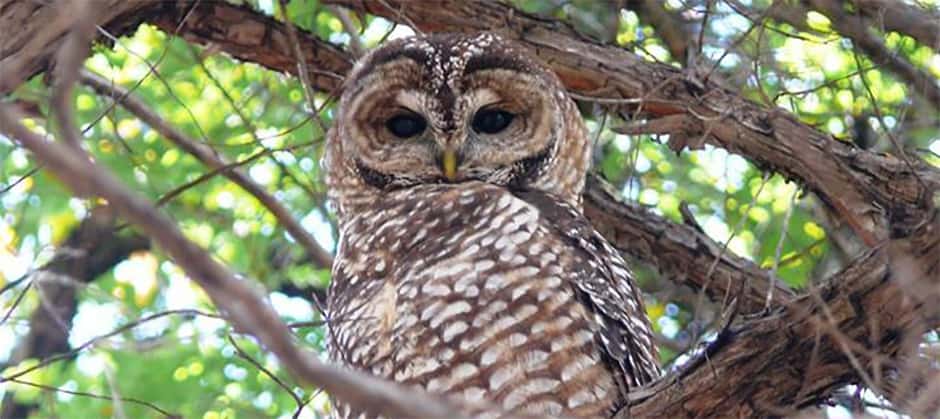Share this article
Agencies agree to do more to conserve Mexican spotted owl
Under an agreement finalized last week, Mexican spotted owl (Strix occidentalis lucida) populations in the Southwest will receive additional monitoring and conservation measures by the U.S. Fish and Wildlife Service and U.S. Forest Service.
In 2013, WildEarth Guardians challenged the U.S. Fish and Wildlife Service and the U.S. Forest Service in court, arguing that the agencies were not fully considering the impacts of timber management actions on Mexican spotted owl populations across 20 million acres in 11 national forests in New Mexico and Arizona, thus violating the U.S. Endangered Species Act.
As a condition of the voluntary agreement reached by the parties and approved by a judge last week, the Forest Service will undertake annual population trend monitoring and evaluate the impacts of its logging operations on the owl and its habitat. The USFS will also be required to ensure its activities are compatible with the U.S. Fish and Wildlife Service’s Mexican spotted owl recovery plan by conducting owl surveys before implementing any ground-disturbing activities.
The agreement will also establish a new Mexican spotted owl leadership forum, in which agency leadership will host regular open public meetings to discuss owl recovery efforts in Arizona and New Mexico, and ‘working teams’ for specific ecological areas, which will provide a forum for stakeholders to discuss issues relevant to implementation of the recovery plan.
Mexican spotted owls, found in Arizona, New Mexico, Colorado, Utah, parts of West Texas and Mexico, were first listed as threatened in 1993, as a result of habitat loss due to timber management practices. A five-year review in 2013 determined that the owl was “somewhat widespread and well-distributed across its range,” although “threats such as wildfire and forest management have the potential to adversely affect Mexican spotted owls and their habitat throughout their range.”
This voluntary agreement is the latest installment in a long and complicated legal battle over the species’ management. In September, 2019, a judge decided part of the case, ordering the Forest Service to temporarily stop any timber management actions on six national forests in New Mexico and Arizona. The voluntary agreement brings that case to a complete conclusion.
Header Image: A voluntary agreement ends a decades-long legal battle over Mexican spotted owl management.








